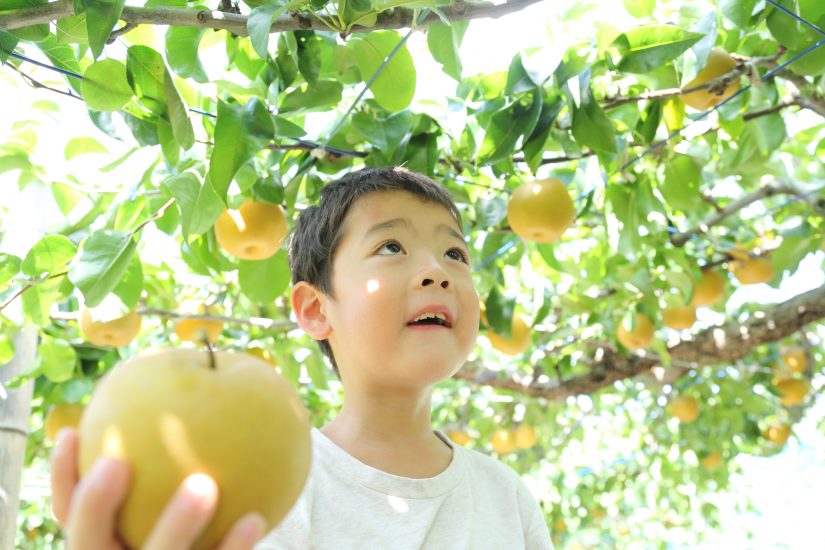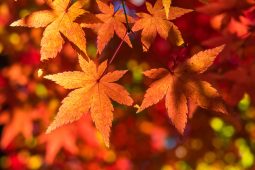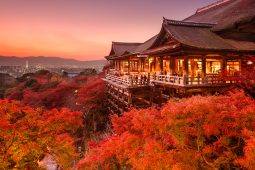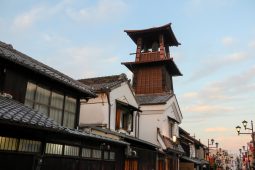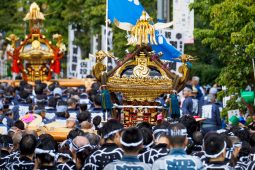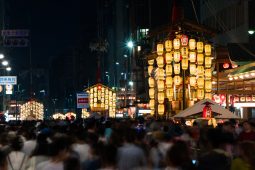Like much of the temperate climates of the world, Autumn in Japan is marked by cooler weather, changing leaves, and the harvest of summer’s planting. This means that, like many countries in Europe and North America, this season is a time of celebrating the end of summer’s heat and the bounty of the harvest.
So, what can you expect from marking this season in Japan, often known as 食欲の秋 (shokuyoku no aki) or “autumn appetite”?
Koyo, the Changing of the Leaves
The cooler weather brings brilliant red, orange and yellow foliage to the mountains of Japan, and with it, tourists. Much like the cherry trees, Japanese maple and other varieties of color-changing trees (gingko, for example) are planted in great swathes so that for one short season their beauty is concentrated for pure enjoyment. Unlike the cherry trees, however, these areas tend to be on mountainsides or valleys rather than parks, so the tourists tend to be in cars or buses, with some hikers in for good measure.
Also like the cherry trees, the best viewing season will depend on the area, climate, and trees, so keep an eye on travel or news sites for the best time to go viewing in your area.
Some places are famous nationwide for their leaves. The Arashiyama district in Kyoto is one of these, and while I understand that the view is lovely indeed, the crowds certainly aren’t. Another famous one in western Japan is Miyajima in Hiroshima prefecture. It can also get crowded, but skillful planning (i.e. going on weekdays or in early mornings) can help you avoid extremes.
Food
Like I mentioned, the Japanese nickname for the season is Autumn of Appetite, and there is good reason: the food is incredible. The list of in-season foods is seemingly endless, with sweet potatoes, matsutake mushrooms, fatty pacific saury, nashi pears, persimmons, eggplants, and…more and more.
The changing of the seasons also means that people start spending more time indoors, which offers the perfect chance to cluster around a nabe hotpot filled with the season’s best foods simmering in all kinds of broths. Some people even have nabe parties, inviting friends over to bring their favorite ingredients to throw in the mix. Maybe you could throw your own!
Then there are the roasted sweet potatoes. Not only is the rich, sweet smell of roasted sweet potatoes one of the real markers of Autumn in Japan, but the song of the sellers (Ishiyaaaki imo! Oishi yaki imooooo!) fills not only residential streets, but some supermarket vegetable aisles as well.
A popular activity in rural Japan combining the season’s bounty with some outdoor fun is fruit picking (果物狩り, kudamono gari). Orchards growing apples, nashi pears, and more will often let you pay a fee at the door to go in and pick all the fruit you can eat (it usually costs more to take some home). It’s a nice way to enjoy autumn with all five senses.
Festivals
Anyone who has read about the other seasons of Japan may have noticed: there are always festivals. The marking of the seasons always seems to offer some reason to celebrate, though the focus tends to be a little different. Unlike the spiritual reverence of Obon in summer, autumn festivals tend to be focused on giving thanks for the harvest, and fortifying the soul for the upcoming season of darkness.
Though the reasons might be different, the basics are often similar: there will be streets lined with yattai stalls selling street food and trinkets, parades of dancers, or portable Mikoshi shrines, and people out enjoying the atmosphere.
One of the most famous, and most interesting, of Japan’s autumn festivals is the Nagasaki Kunchi, which has a history going back to the 16th century. It features a Chinese-style dragon dance, and a practice called niwamise (庭見せ, garden showing), in which certain neighborhoods open up private homes to public visits. It takes place from October 7th do 9th each year.
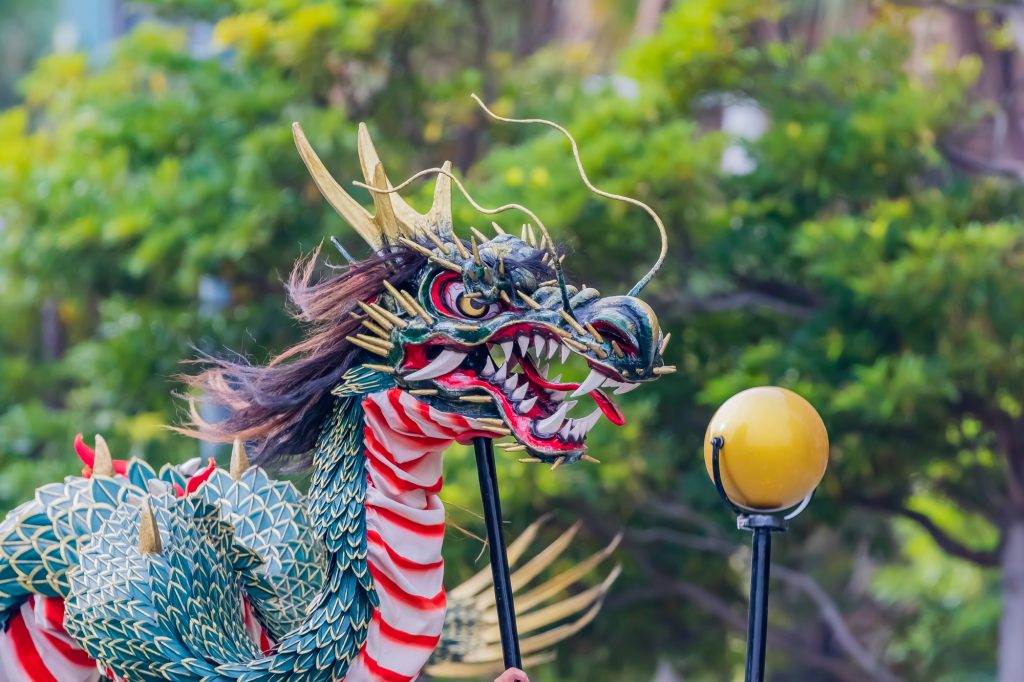
Another is Nikko, Tochigi’s Shuki Taisai, the Autumn Grand Festival. It recreates a taste of 17th century Japan with a parade of people dressed as samurai, and displays of horse-back archery (yabusame, 流鏑馬). The date varies by year, but in 2019 it runs October 16th and 17th, at Nikko’s Toshogu Shrine.
Yabusame is actually a fairly common feature of autumn festivals, and can be seen at the Takata-no-Baba Yabusame festival in Tokyo (second Monday in October); the Yabusame Festival in Koyama, Kagoshima (October 19); the Kasagake Ritual in Kyoto (October 19); and the mid-October Nagoya Festival.


